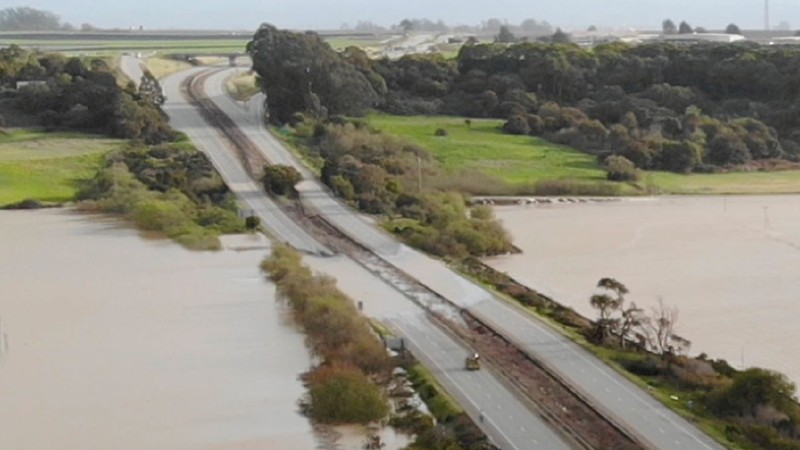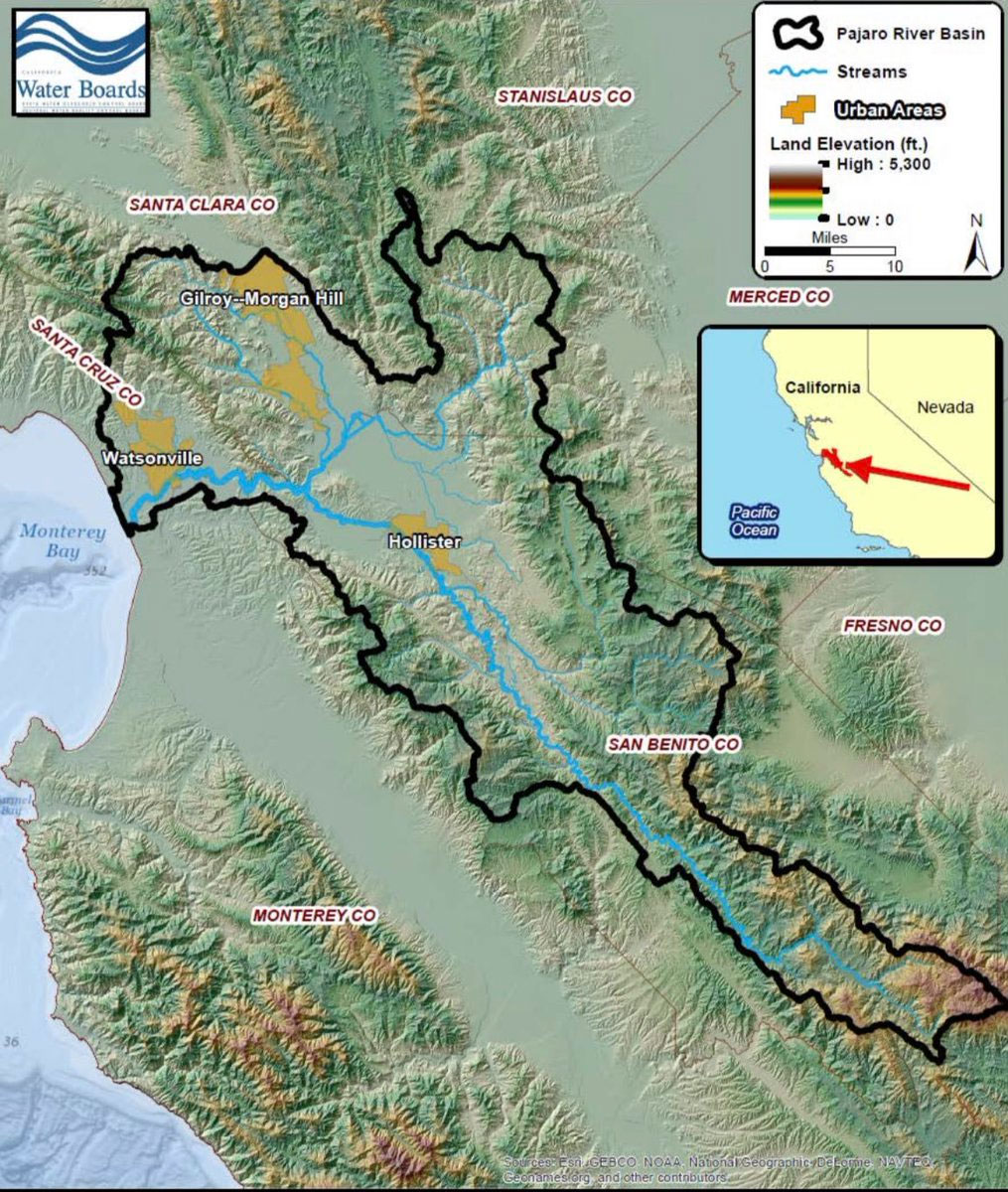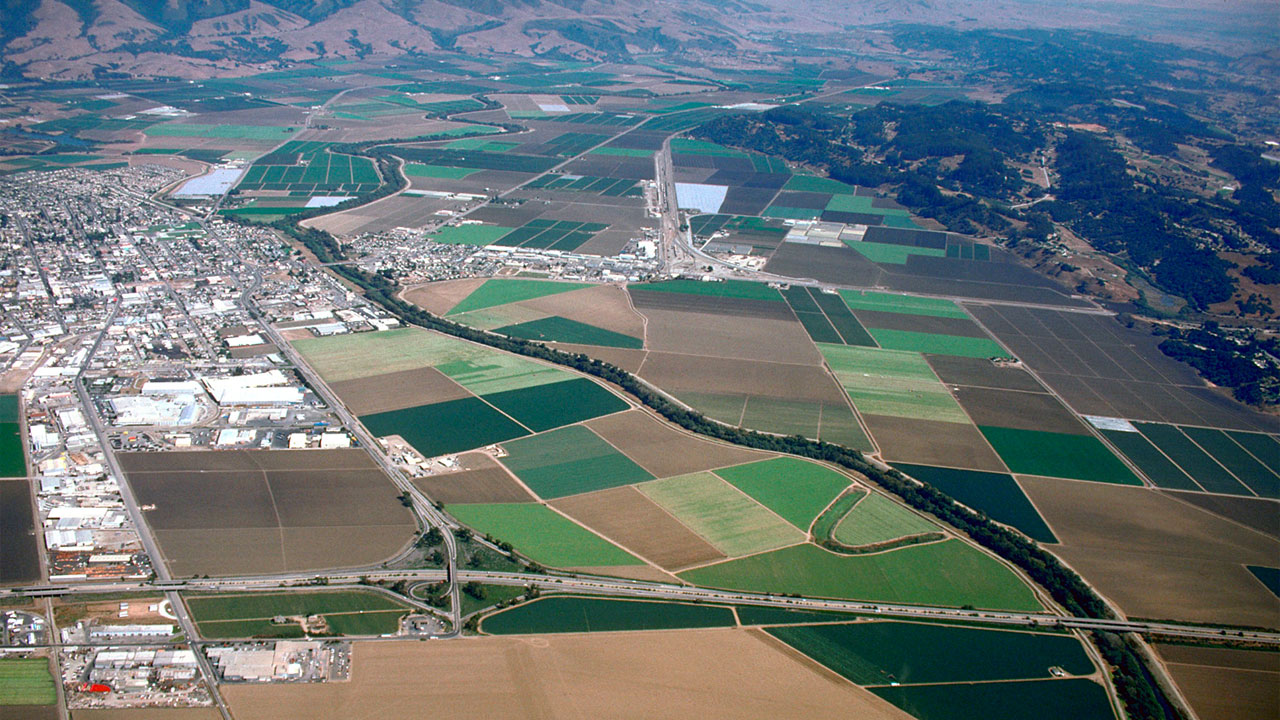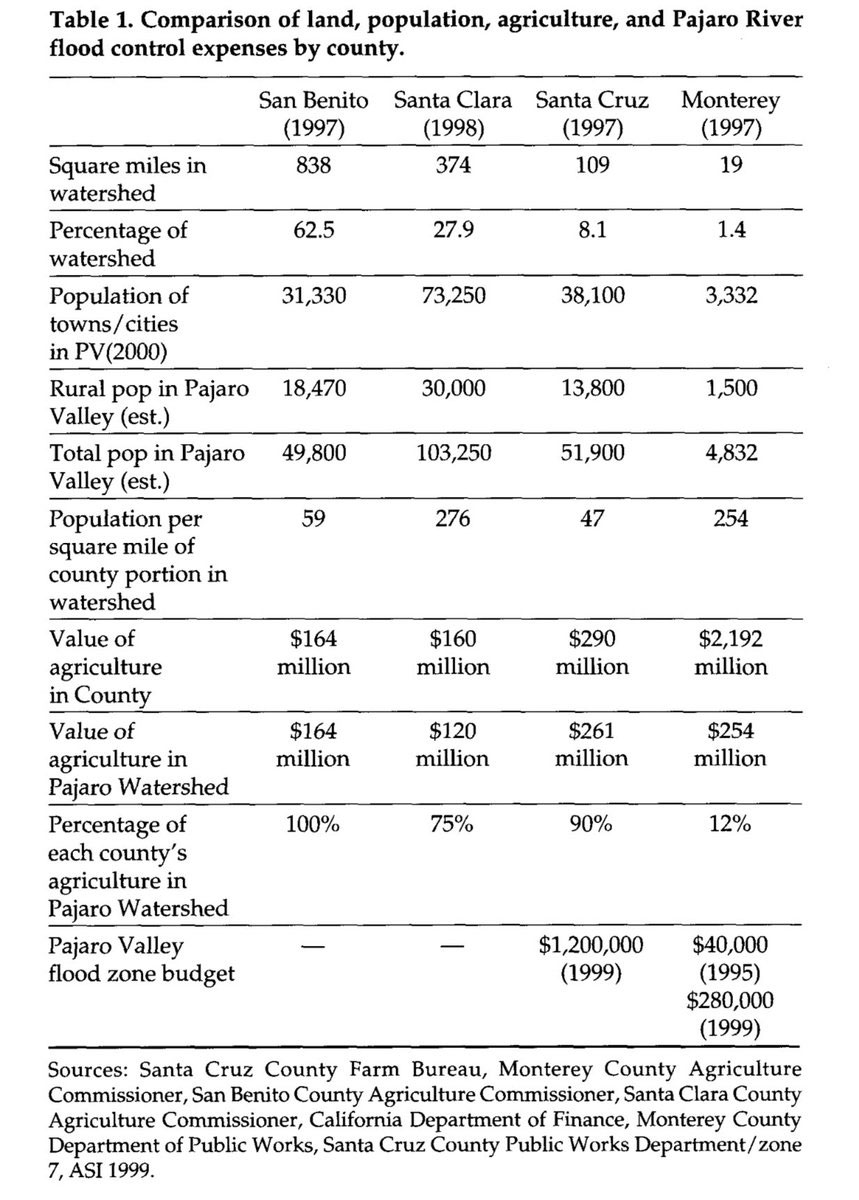The Central Coast’s second largest watershed lies on the boundaries of four counties.

Detail from a photo tweeted by the city of Watsonville warning residents about the impending atmospheric river storm. City of Watsonville
By Dustin Mulvaney
The Pajaro River is the second largest watershed on the central coast of California, at 1,340 square miles. It’s in the news because a major levee failure inundated the town of Pajaro in the middle of the night on March 10 and into the morning of March 11.
The river is the boundary between Santa Cruz and Monterey counties, and Santa Clara and San Benito counties, and it drains a few more counties; so the river’s management has long been politically fragmented. It’s a case study in conflict over shared river basins, riparian political conflict.
The river’s physical geography is shaped by the San Andreas fault, which crosses the Pajaro at the Chittenden Gap, and tributaries running off the Santa Cruz Mountains, and the Gabilan, Coast and Diablo ranges. In fact, the 1989 Loma Prieta earthquake deformed the levees. The river’s path through the upper reaches is on the North American Plate, while the lower reaches are on the Pacific Plate. Not far from where the sea meets the river today is Elkhorn Slough, an estuary that takes water off the Salinas and Pajaro rivers.

A Changing Landscape
The lower Pajaro River prior to colonialism was full of creeks, ponds, marshes and wetlands in the winters. The earliest settler agriculture did little to transform this system because they grew mostly wheat and used the land during dry season for livestock. In the 1870s, workers from the Kwangtung Providence of China, which has a similar climate and terrain, transformed the land into some of the most productive arable land in the world, growing the town of Watsonville in the center of a major floodplain.
The first recorded flood along the Pajaro was in what was then known as Brooklyn, established in 1888 when the Chinese community of Watsonville agreed to move across the river and county line, reestablishing themselves on the site of what is the community of Pajaro today.
The first levees were on the Santa Cruz County side of the river to protect Watsonville, but they were not built on the Monterey side. According to Cabrillo College Professor Emeritus Sandy Lydon, “Chinese residents learned to move their possessions to the second floor of their dwellings to protect them from water damage.”
The Corps Comes to Town
The Works Progress Administration was the first federal effort to develop flood control, and the Army Corps of Engineers started plans in 1936. But the Corps had to redesign their plans after a major flood in 1938 exceeded anticipated flows.
After WWII delays, the Army Corps finished levee construction in 1949, using war surplus materials in some places, and turned them over to Santa Cruz and Monterey counties to run on a 50/50 cost share basis. The counties agreed to maintain them based on the Corps’ operations manual.
The system was designed to provide protection against a 1% chance (100-year) flood in urban areas and 2% chance (50-year) elsewhere. Two major floods within ten years far exceeded anticipated flows and caused more in repairs ($1.3m) than the initial levees cost ($750k).
In 1963 the Corps found the project inadequate for the congressionally intended federal investment, and Congress authorized the reconstruction of the levees in 1966, and again in 1986, but proposed designs could not find common agreement about boundaries, land condemnation, or funding.

An important factor in the failure to address flooding in Pajaro was changes to the funding mechanism. Earlier federal investments in flood control were entirely paid for by the federal government, but by this time local governments were asked to contribute a cost share to new flood control construction, 25%, which later rose to 35%. But different counties have different priorities, and this becomes more complicated in areas where one side of a river bank is in a different county. Getting counties to agree on the investment, whose land gets condemned for new flood control, etc., gets complicated really fast, exemplifying the challenges of political fragmentation.
For example, Monterey County is an enormous agricultural economy, and is less likely to invest to prevent losses of the much smaller agricultural revenue near Pajaro. And in Santa Clara County, where half the watershed’s residents live; Pajaro is not anywhere near the county’s top priority.
Through the 1970s a long drought cycle, high costs, and opposition to condemnation of agricultural land prevented action. The area experienced severe flooding during El Niño storms in 1995—flooding that required the Army Corps to breach levees to get water back into the Pajaro River.

To echo how fragmented governance can result in unequal flood control investments: In 1995 Santa Cruz County contributed $1,200,000 in its budget, compared to $40,000 appropriated from flood control from Monterey, and zero from the other two counties. This despite Monterey County benefitting from lucrative strawberry production and processing facilities located in the Pajaro River floodplain.
Ironically the levee that broke in 1995 was on the Monterey side of the river, but technically in Santa Cruz County (river mile 9) because in several places along the river, a few farmers laying out the first levees sought to maximize arable land.
Today it is unclear when any sense of normalcy will return to the residents of Pajaro, even when they can return to homes or work. The damage, contamination, and vulnerable housing highlight yet another manifestation environmental injustice in California that we must not forget.
New levee construction was finally approved in recent years and is set to begin in 2024. Too little too late for those evacuated and impacted by the 2023 atmospheric river. We need to better understand why vulnerable residents and communities remain vulnerable and this case shows how political boundaries along rivers can undermine public commitments and investments in better flood control.
Dustin Mulvaney is a professor in the Department of Environmental Studies at San José State University.
This article draws on some newspaper archival work and a publication from 2001 by Keith Douglass Warner called “Flooding and fragmentation: how physical features structure political conflict over flood control in California's Pajaro Valley.” Yearbook of the Association of Pacific Coast Geographers, 63(1), 97-118.
Long form articles which explain how something works, or provide context or background information about a current issue or topic.